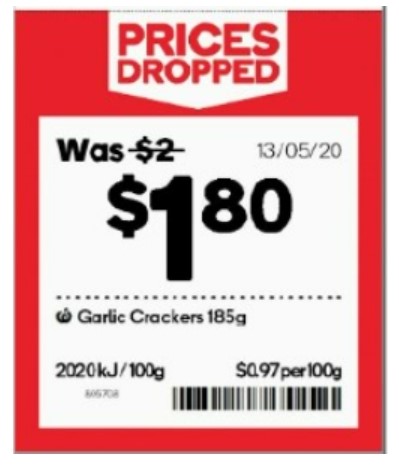The major supermarkets are facing serious allegations about their pricing practices, with legal action from the ACCC and now a class action lawsuit. Here are some key insights to consider regarding this situation.
Understanding the Case
The allegations against Coles and Woolworths focus on their "Prices Dropped" and "Down Down" promotions.

The core issue is that these supermarkets allegedly had products at regular prices. Temporarily increased these prices. Later, they dropped the price to a level above the original regular price. They then marketed these as discounted.
The Grey Areas in Retail Pricing
As retailers, we face dealing with vague terms in consumer laws. Politicians often use words like "reasonable" without clear definitions, leaving it to the courts to determine their meaning. This creates uncertainty for retailers trying to comply with the law. My Personal Experience: I remember a situation from my childhood in our family shop that highlights the complexity of this issue. My Mum had ordered candles at one price, and then my Grandfather, unaware of the existing stock in the storeroom, ordered more. When we noticed the error, the price had gone up, so we had too much. We created a display with prices slightly above the old price and advertised it as a discount. Under today's scrutiny, this is dubious.
Practical Implications
If you've recently increased product prices, be careful about advertising discounts if the "reduced" price is still above the original price point. The tricky part is determining what constitutes a "reasonable time" between price changes if you want to use the term "discount" - something we're waiting for the courts to clarify.
The Class Action Development
Two legal firms, independent of the ACCC case, have now initiated a separate class action. While this adds another layer of complexity to the situation, it's important to note that this action is separate from the ACCC's proceedings. Even if the ACCC case fails, these might not.
How much are we looking at from the consumer, say $300/week for a typical purchase, 20 months for Woolworths at 10% of the weekly bill? We are looking at $300 (weekly spend) x 365 (days a year) / 7 (days a week) /12 (months a year) x 20 months x 10% (of the bill) = $2,6000
We are talking millions of customers, so you do the maths here now to see the seriousness of the case and add what I am sure will be tens of millions in legal costs.
Plus, the loss of goodwill.
The links are here for you to check out or join these actions.
Class Action – Woolworths & Coles Deceptive Pricing Allegations
Protecting Your Business - POS System Compliance
A modern POS system can be your best ally in maintaining pricing compliance and transparency. Here's how: Automated Price History Tracking. Your POS system will automatically maintain a detailed audit trail of every price change, including the original price, the Date and time of the change, the staff member who made the change, and the Duration of promotional prices. Generate price change reports for compliance.
Meanwhile
While we await more explicit guidelines from the courts about what constitutes "reasonable" pricing practices, remember that when used properly, your POS system can provide the documentation and tracking tools that you may need to demonstrate compliance and maintain transparency with your customers.
FAQ
Q: What pricing practices are under scrutiny?
A: Retailers whose regular prices were temporarily increased before being "dropped" to levels above the original price while being marketed as special deals.
Q: What are the legal requirements for price promotions?
A: Under Australian Consumer Law, businesses must not use misleading or deceptive pricing practices, including transparently representing discounts and promotions.
Q: How can retailers ensure compliance?
A: Retailers should implement transparent pricing strategies, maintain clear documentation of price changes, and regularly audit their promotional practices.


